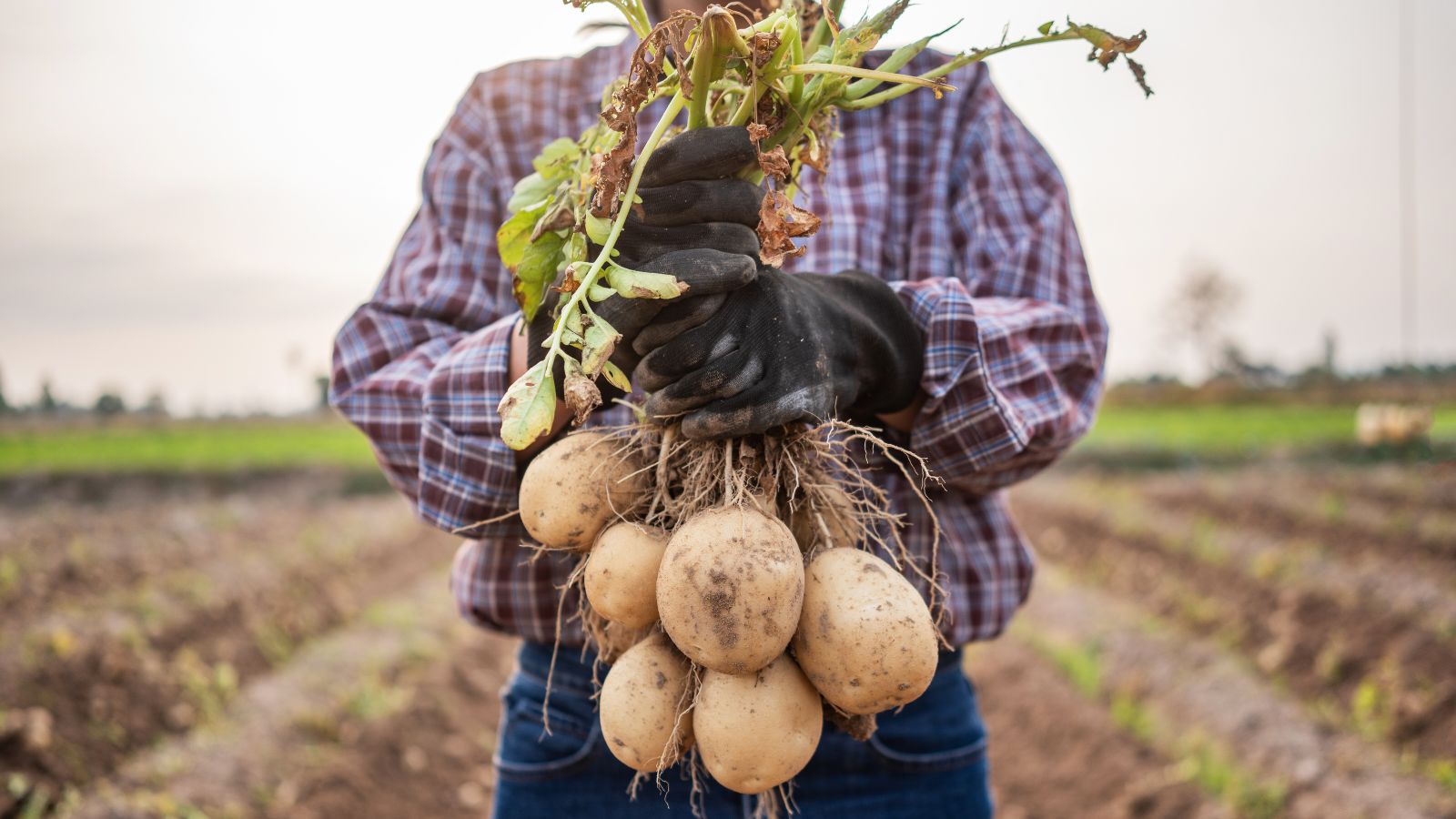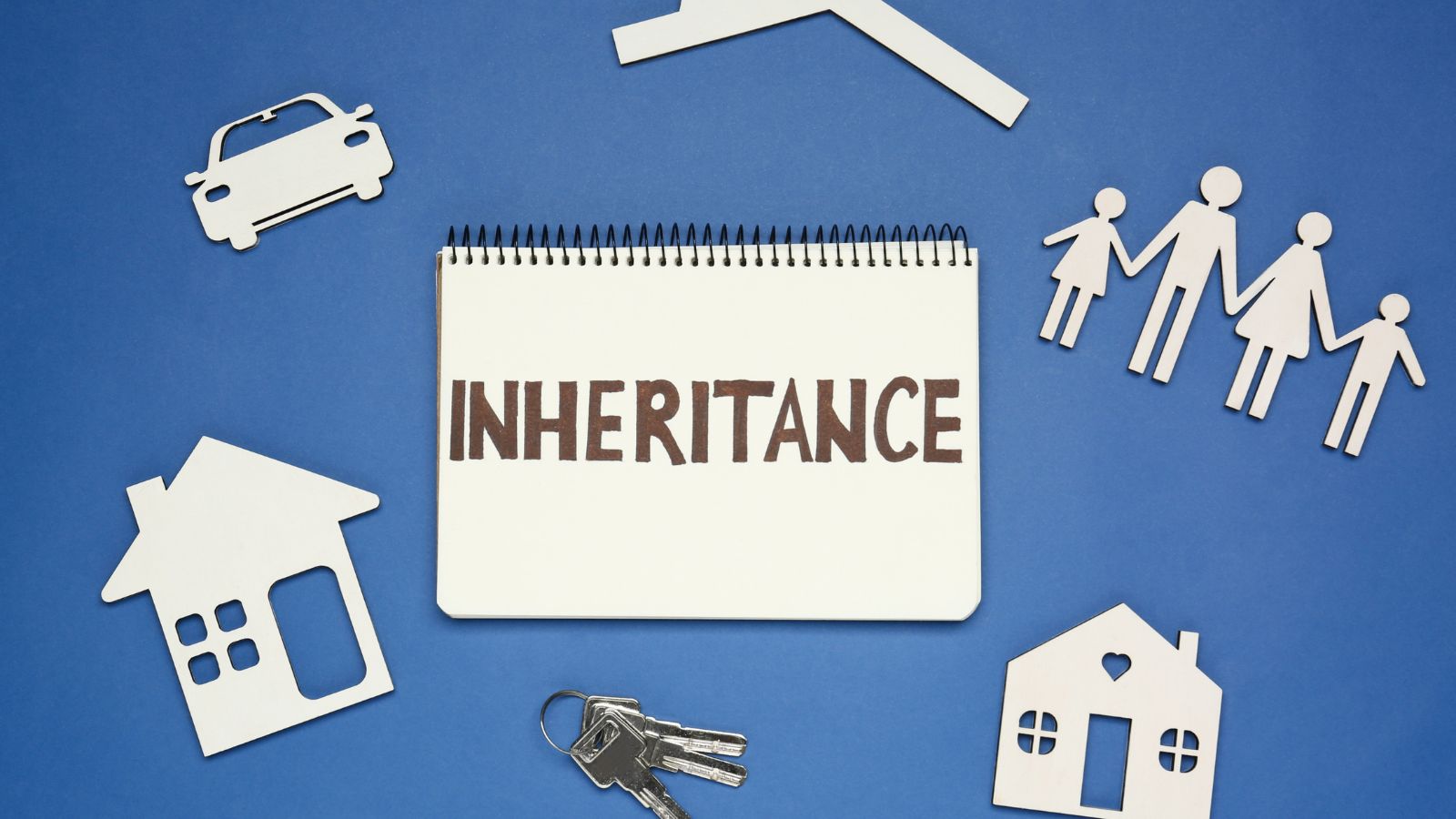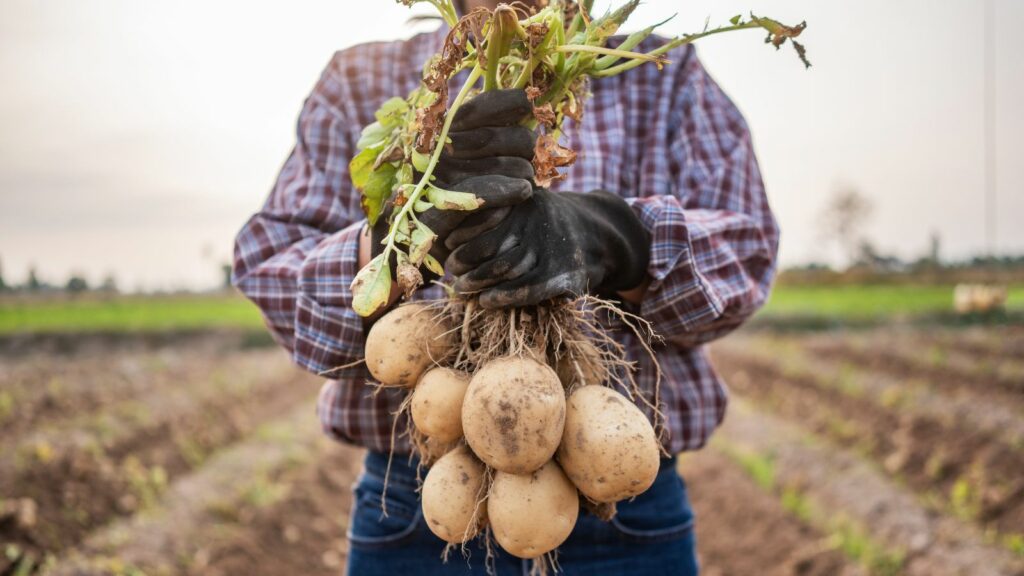Canada is on the verge of the largest wealth transfer in its history. As Baby Boomers and older generations pass down assets, homes, businesses, and investments, younger Canadians are quietly inheriting not just money, but influence and responsibility. These transfers aren’t always flashy, and many are reshaping communities, industries, and family dynamics in subtle but profound ways. Here are 25 Canadian wealth transfers happening quietly across generations:
Family-Owned Farms Handing Over the Fields

Across Canada, family farms are being handed down to younger generations in what amounts to a quiet reshaping of the agricultural sector. With the average Canadian farmer nearing retirement age, billions in land value and equipment are being transferred. Many heirs are modernizing operations with sustainable practices, agri-tech, and direct-to-consumer models, while still preserving family traditions. For rural communities, this wealth transfer represents both continuity and renewal.
Small Business Succession in Local Towns

In small towns across Canada, local businesses are changing hands from aging founders to their children, or, in many cases, to ambitious young community members. These transitions keep wealth, jobs, and economic stability anchored locally. Bakeries, auto shops, and family-owned restaurants are often the beating heart of small communities, and passing them on ensures continuity. While some successors bring new branding and digital tools, the values of service and customer trust remain.
Inheritance of Urban Real Estate Portfolios

Canada’s real estate wealth, particularly in cities like Toronto and Vancouver, is increasingly shifting to younger generations. Parents who bought homes decades ago are passing down properties worth millions today, creating instant wealth transfers that significantly alter financial futures. For many young Canadians, these inheritances provide the security and opportunity they couldn’t achieve through wages alone. This transfer is also driving conversations around inequality, as those who inherit benefit from massive windfalls while others remain priced out.
Passing Down of Indigenous Land Stewardship

In Indigenous communities, wealth transfer often looks different from mainstream narratives. It involves passing down stewardship responsibilities for traditional lands, knowledge, and rights that have both cultural and economic significance. Younger generations are inheriting not just property, but also leadership roles in land management, resource negotiations, and cultural preservation. As land claims are settled and revenue from resource agreements grows, these transfers are reshaping community economies while ensuring traditions endure.
Family Cottages Becoming Multigenerational Assets

For many Canadian families, cottages are more than vacation properties, they’re also multigenerational legacies. As Baby Boomers age, thousands of lakeside cabins and chalets are being passed to children and grandchildren. These inheritances represent significant wealth, given the rising value of waterfront properties, but they also carry emotional meaning as spaces tied to family memories. Some heirs choose to modernize or rent them out, while others simply preserve them for family gatherings. In either case, cottages have become an important form of wealth transfer, blending financial value with deep cultural and emotional significance.
Education Savings Passed Down

Canadian parents and even grandparents are increasingly using Registered Education Savings Plans (RESPs) to create generational advantages. These funds, often started decades earlier, are now maturing and providing tuition support for younger generations without the burden of student debt. Beyond RESPs, many families are transferring surplus income directly to cover costs of private schooling, training programs, or graduate studies abroad. By investing in education early, families not only transfer money but also opportunity, equipping younger Canadians with skills that lead to higher lifetime earnings and long-term wealth creation.
Property Inheritances in Smaller Towns

As urban real estate markets soar, families are quietly passing down vacation properties and small-town homes to younger generations. While these properties may have been modest purchases decades ago, they’ve appreciated significantly in value, often becoming multi-million-dollar assets. Many inheritors choose to hold them as rentals, providing steady income, while others move in to escape high city costs. This kind of wealth transfer is often overlooked, yet it plays a vital role in anchoring generational stability and ensuring younger Canadians can access affordable living.
The Family Business Hand-Off

Across Canada, thousands of family-owned businesses are transitioning to the next generation. From local construction firms to restaurants and retail shops, these businesses represent decades of hard work and equity that younger family members now inherit. The transfer often includes not just physical assets but also customer relationships, brand reputation, and operational know-how. In many cases, the value of these businesses has grown substantially, making them a significant wealth transfer. For successors, it’s an opportunity to modernize and expand, while still benefiting from the foundation laid by earlier generations.
Farming Wealth Shifts to Heirs

In Canada’s agricultural heartlands, the transfer of farmland and farming operations represents one of the largest generational wealth movements. Rising land values, particularly in Ontario, Alberta, and Saskatchewan, have turned what were once modest farms into multimillion-dollar estates. Heirs often inherit not just land, but equipment, livestock, and established supply chains, and some continue the farming tradition, while others lease land to larger operators for passive income. Either way, these transfers preserve and grow wealth for the next generation, while ensuring that family legacies in Canada’s food economy remain intact.
Cottage Succession Planning

For many Canadian families, the cottage is property and heritage. What was once a simple summer retreat is now a highly valuable asset, especially around lakes in Ontario, Quebec, and British Columbia. Parents are increasingly formalizing succession plans to transfer cottages to children and grandchildren while minimizing tax burdens. These transfers can be complex, involving capital gains and shared ownership agreements, but families see them as vital. Beyond financial value, cottages serve as emotional anchors, offering younger generations both an inheritance and a tradition to pass on to themselves.
Dividend-Paying Stocks Handed Down

Dividend stocks, carefully held over decades, are quietly becoming powerful vehicles for wealth transfer. Older Canadians who invested consistently in blue-chip companies are now passing these portfolios to children or grandchildren. The result is not just inherited capital but a steady income stream that can fund housing, education, or retirement needs. This transfer often includes decades of reinvested dividends that have compounded significantly. For heirs, the inheritance also serves as a financial education, demonstrating the power of patience and long-term investing in creating sustainable wealth across generations.
RRSP Rollovers at Retirement

When Canadians pass away, Registered Retirement Savings Plans (RRSPs) can roll over to a surviving spouse or, in some cases, to children. This quiet wealth transfer ensures tax-deferred growth continues into the next generation, preserving savings that might otherwise have been lost to taxation. Families with strong financial planning often maximize these rollovers, giving heirs a structured and long-term pool of capital to draw from. While less flashy than real estate, RRSP rollovers represent a massive generational wealth transfer, ensuring that accumulated savings support younger family members in their financial futures.
Life Insurance Payouts

Life insurance remains one of the most direct and impactful tools for transferring wealth in Canada. When a policyholder passes, beneficiaries receive tax-free payouts that can range from modest sums to life-changing amounts. For many families, this serves as the cornerstone of intergenerational wealth planning, allowing heirs to pay off mortgages, start businesses, or invest for the future. While life insurance isn’t always seen as glamorous, its quiet role in stabilizing and boosting financial futures makes it one of the most consistent forms of wealth transfer in Canadian households.
Family Trusts Gaining Popularity

Family trusts are increasingly being used as a structured way to pass down wealth while controlling how it’s distributed. These trusts often hold investments, property, or business assets, ensuring younger generations benefit without losing long-term sustainability. Popular among high-net-worth families, trusts allow parents and grandparents to guide wealth transfers beyond their lifetimes, minimizing taxes and avoiding conflicts. In Canada, more families are setting them up quietly, often behind the scenes, to guarantee smooth transitions.
Art and Collectibles

Not all wealth comes in the form of cash or real estate. Fine art, antiques, jewelry, and collectibles are increasingly being passed down as part of intergenerational transfers. What may have started as a hobby for one generation often turns into a substantial store of value for the next. Canadian families are realizing that these items not only carry financial worth but also cultural and emotional significance. Heirs often choose between keeping them as family heirlooms or selling them to reinvest in more practical assets, continuing the cycle of wealth growth.
TFSA Contributions Transferred

The Tax-Free Savings Account (TFSA) is one of the most efficient tools for Canadians to transfer wealth across generations. Since contributions and growth are tax-free, heirs can inherit these accounts without significant erosion of value. Many Canadians maximize their TFSA contributions annually, building portfolios of stocks, bonds, and ETFs that are eventually passed to children or spouses, which creates a legacy of tax-efficient savings that benefits the next generation. Quiet yet powerful, TFSA inheritances are becoming a cornerstone of Canadian wealth transfer strategies, offering both simplicity and long-term growth.
Rental Income Properties

Beyond principal residences, many Canadians have invested in rental properties that provide consistent monthly income. When passed down, these properties not only offer heirs valuable real estate but also ongoing cash flow. Inheritance of rental income streams is one of the most practical forms of wealth transfer, especially in major urban markets where rents remain high. For younger generations, these assets provide financial stability and can serve as a springboard for future investment opportunities.
Charitable Legacy Gifts

While not always kept within families, charitable donations and foundations represent another form of wealth transfer with lasting influence. Many Canadians are creating endowments or leaving portions of their estates to charities, hospitals, and universities. In some cases, children inherit the responsibility of managing family foundations, giving them influence and social capital alongside financial stewardship. These gifts may not directly fund heirs’ bank accounts, but they shape reputations, open networks, and sometimes provide tax relief that indirectly preserves family wealth. Legacy giving demonstrates how wealth transfers extend beyond money into broader impact.
Pension Benefits to Survivors

For many Canadians, pensions remain a critical source of retirement income, and some plans allow surviving spouses or dependents to inherit ongoing benefits. While not always fully transferable, these survivor pensions can provide long-term stability for families. This quiet form of wealth transfer ensures that decades of contributions don’t disappear with one generation but continue to support the next. For younger heirs, it can mean having extra income streams during critical times, reducing financial stress. Although often overlooked, survivor pensions remain one of Canada’s most stable generational transfers.
Equity in Small Businesses

Many Canadians operate small businesses that don’t make headlines but hold significant equity value. When these are passed to children, the wealth transfer is both financial and entrepreneurial. A small auto shop, a chain of convenience stores, or a local manufacturing operation may seem modest, but together, these businesses represent billions in transferred equity across Canada. The heirs inherit not just the assets but also customer bases and community reputations. This transfer allows families to preserve income while younger generations innovate and expand, keeping local businesses thriving.
Wealth from Resource Royalties

Canada’s resource-rich landscape means some families quietly benefit from royalties on oil, gas, mining, or timber rights. These rights are increasingly being passed down to younger generations, offering a steady income without direct labor. While concentrated in regions like Alberta and Northern Ontario, these transfers represent significant financial security for families tied to resource industries. Inherited royalties often supplement other forms of income, helping younger Canadians fund housing, education, or investments. Even though they are less visible than real estate, resource royalties represent a quiet but powerful stream of generational wealth transfer.
Vehicles and Equipment Transfers

Large assets like vehicles, boats, or heavy equipment used for trades are often passed down within families. While not always glamorous, these transfers save heirs substantial costs, especially in industries like construction, fishing, or transportation. Equipment that was fully paid off years ago continues generating income for the next generation, and beyond utility, these transfers can also carry resale value. For many Canadian families, practical wealth like this makes a bigger difference than cash inheritances, ensuring younger members have the tools they need to maintain or grow financial stability.
Digital Assets Passed On

As more Canadians invest online, digital wealth transfers are becoming more common. Cryptocurrencies, online investment accounts, and even valuable domain names are now part of inheritance planning. Families are starting to formalize access to digital wallets and accounts, ensuring these modern assets don’t get lost, and for younger heirs, this can mean inheriting diversified digital portfolios that continue to grow. While digital wealth is a newer concept, it’s quietly becoming a key piece of intergenerational transfer strategies in Canada, reflecting how modern families are redefining what wealth looks like.
Professional Networks as Wealth

Wealth transfer isn’t always about dollars, as professional connections, mentorship, and business networks are being passed across generations in Canada, shaping opportunities as much as assets. Parents often introduce children to long-standing clients, business partners, or industry peers, effectively giving them a leg up in careers and entrepreneurship. This kind of wealth may not show up on a balance sheet, but it translates into contracts, jobs, and investment opportunities. In Canada’s competitive markets, access and reputation are powerful assets that are quietly handed down alongside financial inheritances.
Cash Gifts Before Inheritance

Finally, more Canadian families are engaging in living inheritances by gifting significant sums of money before death. Instead of waiting for formal estate distribution, parents and grandparents are helping younger generations with down payments, business start-up funds, or debt repayment. These cash transfers allow wealth to be used when it’s most impactful, often during life stages like home-buying or raising a family. For heirs, it means financial relief exactly when it’s needed, while for older Canadians, it ensures they witness the benefits of their hard work being passed on.
21 Products Canadians Should Stockpile Before Tariffs Hit

If trade tensions escalate between Canada and the U.S., everyday essentials can suddenly disappear or skyrocket in price. Products like pantry basics and tech must-haves that depend on are deeply tied to cross-border supply chains and are likely to face various kinds of disruptions
21 Products Canadians Should Stockpile Before Tariffs Hit
